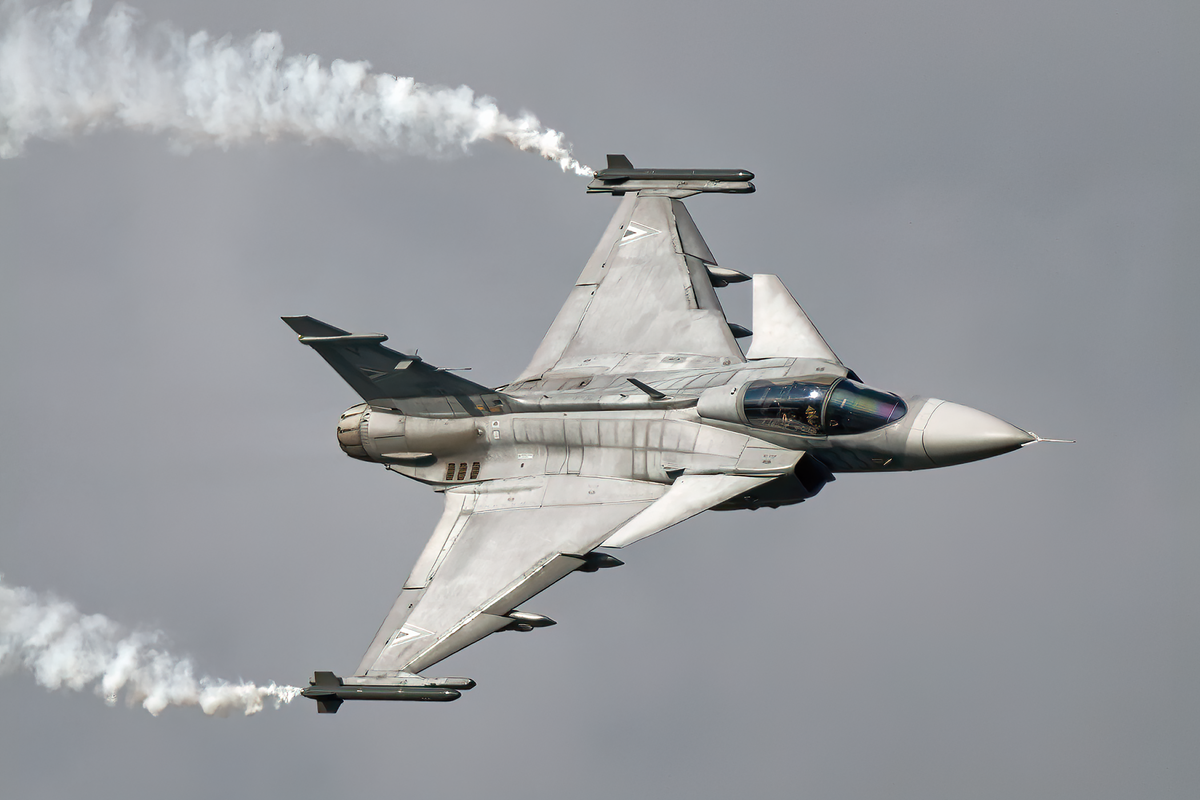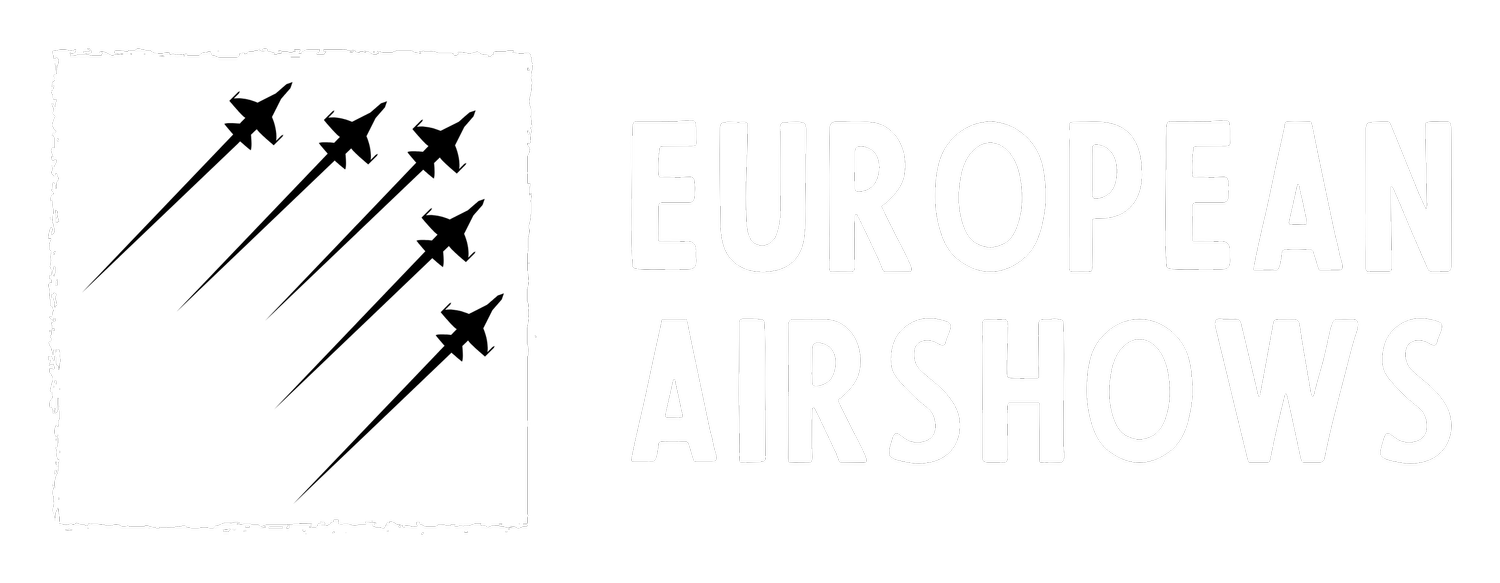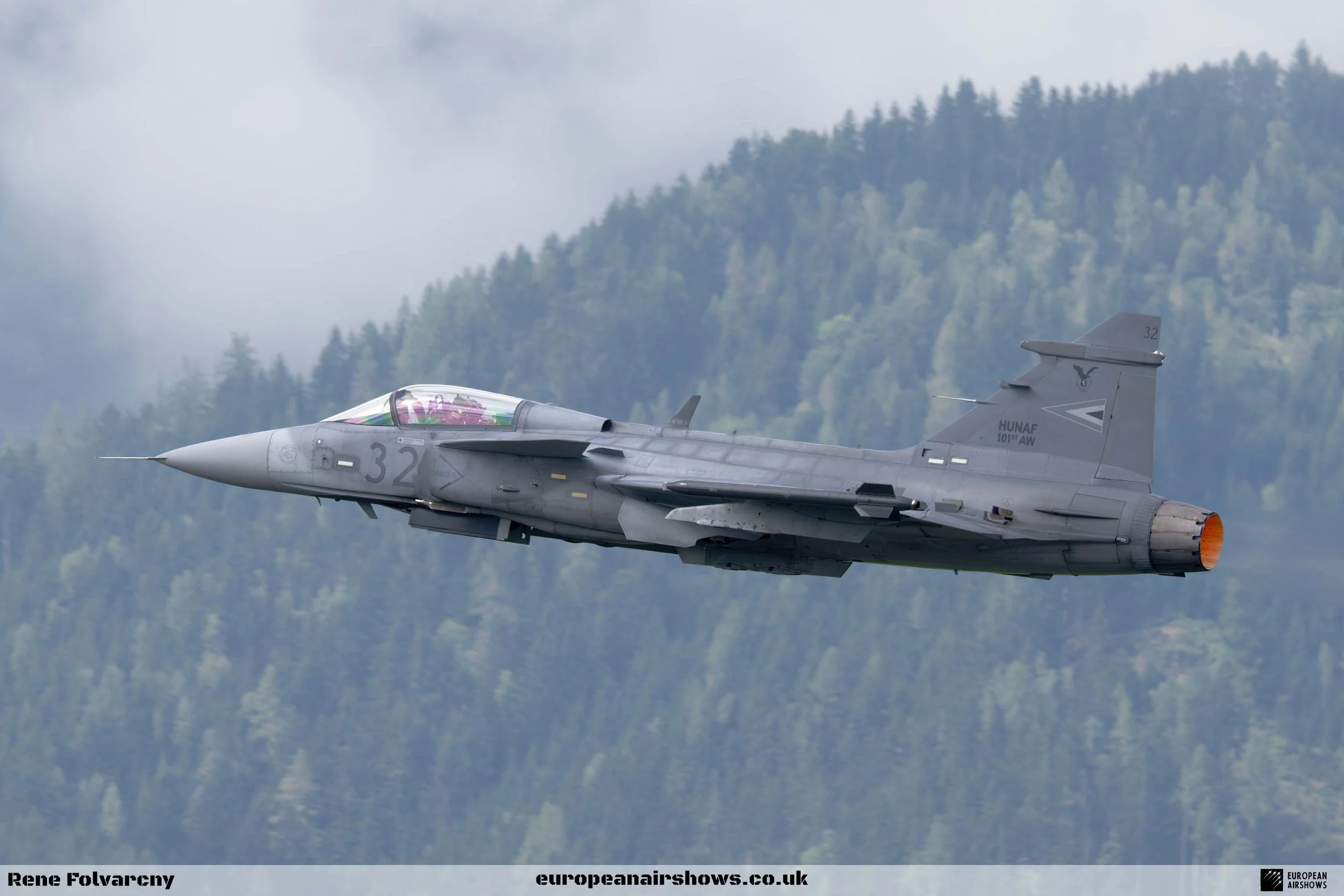
Hungarian Air Force Gripen Solo Display
Gripen Solo Display
The Hungarian Air Force Gripen solo display is a captivating aerial performance that showcases the exceptional agility and advanced capabilities of the Saab JAS 39 Gripen, a lightweight, multi-role fighter jet developed by Sweden’s Saab Group. Featuring a skilled pilot at the controls, the display includes a series of dynamic maneuvers such as slow high-alpha passes and rapid high-G turns, demonstrating both the aircraft’s versatility and the aviator’s precision. The Gripen’s delta wing and canard configuration contribute to its renowned maneuverability, making it a standout asset in the Hungarian Air Force’s fleet for air defense, reconnaissance, and ground attack roles.
A defining highlight of the performance is the “dump and burn” maneuver. During this sequence, the pilot executes a negative G maneuver, forcing fuel to be released from the aircraft’s fin vent. As the afterburner engages, the fuel ignites, producing a dramatic trail of fire that captivates onlookers and underscores the Gripen’s powerful engine and thrust capabilities. The display is further enhanced by smoke winders, which generate white trails to accentuate the jet’s movements, and flares, deployed to simulate defensive countermeasures, adding bursts of light and a tactical flair to the show.
While the display is flown by a single pilot, in certain seasons, the Hungarian Air Force employs two demo pilots who alternate throughout the year, introducing subtle variations in style while maintaining the performance’s core elements. Through its combination of high-speed passes, intricate maneuvers, and visually striking effects, the Hungarian Air Force Gripen solo display not only entertains but also serves as a testament to the pilots’ proficiency and the technological prowess of the Gripen fighter jet.
About the Saab JAS 39 Gripen
The Saab JAS 39 Gripen is a light single-engine multirole fighter aircraft developed by the Swedish aerospace company Saab AB. Its origins trace back to the late 1970s when the Swedish government initiated a program to replace its aging fleet of Saab 35 Draken and Saab 37 Viggen fighters. Designed to excel in air-to-air combat, air-to-ground strikes, and reconnaissance missions—reflected in its "JAS" designation (Jakt, Attack, Spaning)—the Gripen was envisioned as a versatile and cost-effective platform. The first prototype took to the skies in 1988, though early development faced challenges with flight control systems, which were resolved before the aircraft entered operational service with the Swedish Air Force in 1996.
Over the years, the Gripen evolved through multiple variants to maintain its technological edge. The initial A/B models were followed by the improved Gripen C/D variants in the early 2000s, which introduced enhanced avionics, NATO interoperability, and expanded weapon options. In 2019, Saab began delivering the more advanced Gripen E/F models, featuring a more powerful engine, increased payload capacity, and upgraded electronic warfare systems. These upgrades reflect Sweden’s commitment to keeping the Gripen competitive on the global stage, while its export to countries like South Africa, Hungary, and Brazil highlights its appeal beyond Swedish borders.
The Gripen’s development was shaped by Sweden’s strategic needs during and after the Cold War, emphasizing flexibility, rapid deployment, and ease of maintenance. Its lightweight design and single-engine configuration made it economical, while its advanced aerodynamics and fly-by-wire system provided agility and reliability. Today, the Gripen remains a cornerstone of Swedish defense and a symbol of the country’s innovative aerospace industry.
Specifications
Crew
1 JAS 39C / 2 JAS 39D
Length
14.9 m (48 ft 11 in) JAS 39C / 15.6 m (51 ft) JAS 39D
Wingspan
8.4 m (27 ft 7 in)
Height
4.5 m (14 ft 9 in)
Max Speed
Mach 2 (2,100 km/h; 1,300 mph; 1,100 kn) at 15,240 m
Combat Range
800 km (500 mi, 430 nmi)
Service Ceiling
15,240 m (50,000 ft)
Armament Capacity
5,300 kg (11,700 lb)
Gripen in the Hungarian Air Force
Hungary introduced the Gripen to its air force in 2006, leasing 14 JAS 39C/D aircraft from Sweden under a 10-year agreement that was later extended. This move followed Hungary’s entry into NATO in 1999, as the country sought to replace its outdated Soviet-era MiG-29s with a modern, NATO-compatible fighter. The Gripens arrived at Kecskemét Air Base, marking a significant upgrade in Hungary’s air defense capabilities. The lease included training for Hungarian pilots and ground crew, ensuring a smooth transition to the new platform.
The Hungarian Air Force has utilized the Gripen for air policing missions, particularly in NATO’s Baltic Air Policing rotations, demonstrating its commitment to collective defense. In 2015, Hungary renegotiated its lease to acquire the aircraft outright by 2026, reflecting satisfaction with their performance. Upgrades have kept the fleet current, with enhancements to radar and weaponry aligning with NATO standards. The Gripens have also participated in joint exercises, strengthening interoperability with allied forces.
Today, the Gripen remains the backbone of Hungary’s air force, providing a cost-effective yet capable solution for national and NATO obligations. Its small logistical footprint suits Hungary’s needs, and the aircraft’s versatility supports a range of missions, from territorial defense to international deployments. The fleet’s operational success underscores Hungary’s strategic shift toward Western military technology and integration within NATO’s framework.
Did You Know?
- The Gripen can take off and land on runways as short as 800 meters, including highways, thanks to its robust design and Sweden’s strategy for dispersed operations.
- It can be fully serviced, rearmed, and refueled by a team of just six personnel in under 10 minutes, showcasing its exceptional maintenance efficiency.
- The Gripen incorporates stealth features like radar-absorbent materials, reducing its radar cross-section compared to many contemporaries.
- Its PS-05/A radar can track multiple targets and guide missiles simultaneously, a capability rare in fighters of its class when introduced.
- The Gripen’s name, meaning "Griffin" in Swedish, reflects its mythical agility and strength, inspired by the legendary creature.
Test Your Knowledge
1. What year did the first Gripen prototype take flight?















